Blanket Flower, also known as Indian Blanket, is a vibrant and hardy perennial belonging to the Asteraceae family. Its botanical name, Gaillardia, reflects its origins in North and South America. This herbaceous perennial thrives in a wide range of USDA Hardiness Zones (3 to 9) and is best suited for full sun conditions.
Renowned for its striking, daisy-like flowers in bold shades of red and yellow, Gaillardia adds a splash of color to any garden. Its drought-tolerant nature makes it an excellent choice for low-maintenance landscapes while attracting pollinators like bees and butterflies.
| Common name | Blanket Flower, Indian Blanket |
| Botanical name | Gaillardia |
| Family | Asteraceae |
| Origin | North and South America |
| Life cycle | Perennial |
| Plant type | Herbaceous Perennial |
| Hardiness zone | 3, 4, 5, 6, 7, 8, 9 |
| Sunlight | Full Sun |
| Maintenance | Low |
| Soil condition | Loam |
| Drainage | Well-Drained |
| Growth rate | Medium |
| Flowering period | Fall |
| Height | 1 ft. 6 in. – 2 ft. |
| Flower color | Gold, Yellow |
| Leaf color | Gray, Silver |
| Fruit type | Achene |
| Flower benefit | Long Bloom Season |
| Garden style | Native Garden |
I. Appearance and Characteristics
Gaillardia (common name blanket flower) is a genus of flowering plants in the family Asteraceae, native to North and South America. It was named after Maître Gaillard de Charentonneau, an 18th-century French magistrate who was an enthusiastic botanist. The common name may refer to the resemblance of the inflorescence to the brightly patterned blankets made by Native Americans, or to the ability of wild taxa to blanket the ground with colonies. Many cultivars have been bred for ornamental use.
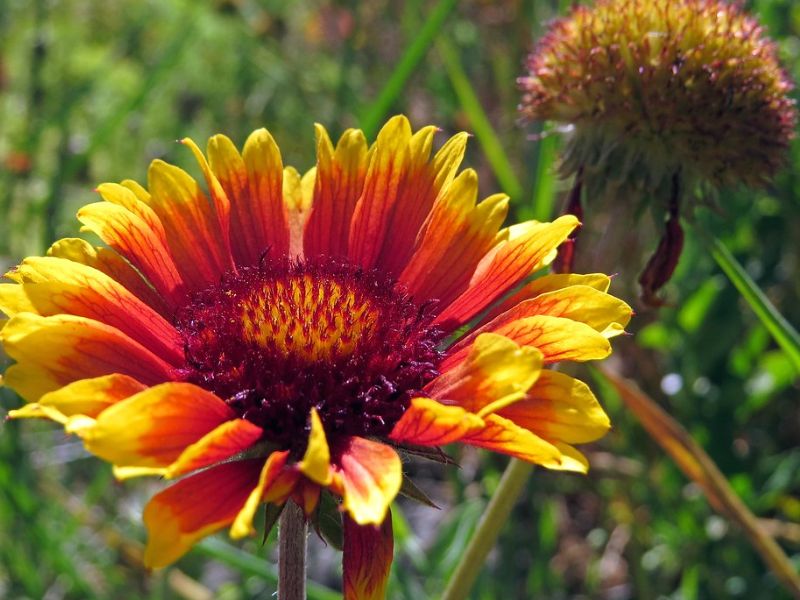
These are annual or perennial herbs or subshrubs, sometimes with rhizomes. The stem is usually branching and erect to a maximum height around 80 centimeters (31.5 inches). The leaves are alternately arranged. Some taxa have only basal leaves. They vary in shape. They are glandular in most species. The inflorescence is a solitary flower head. The head can have 15 or more ray florets, while some taxa lack any ray florets.
They can be almost any shade of yellow, orange, red, purplish, brown, white, or bicolored. They are sometimes rolled into a funnel shape. There are many tubular disc florets at the center of the head in a similar range of colors, and usually tipped with hairs. The fruit usually has a pappus of scales.
II. Types of Blanket Flower
The most common blanket flower is a cross between a perennial and annual species. This hybrid offers the best of both worlds. The hardiness of the perennial parent coupled with the vigor and flowering capacity of the annual parent create a garden knockout.
Since this hybrid was first discovered, research has continued to work to improve all aspects of these plants. By breeding with other species and experimenting on the original two species (G. pulchella and G. aristata), blanket flowers continue to develop. This can be seen in the variety of colors and forms and overall plant habit and hardiness. Advancements continue to be made, and new types are introduced relatively regularly.
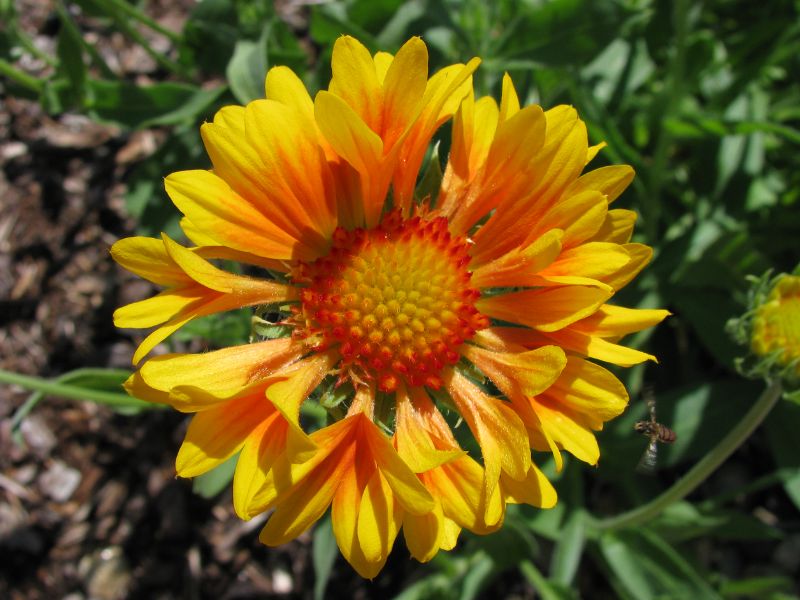
- Firewheel
Gaillardia aestivalis var. winkleri is native to areas of Texas. It bears white flowers in summer and grows 18 inches tall and wide. Zones 8-10
- ‘Fanfare’ Blanket Flower
Gaillardia ‘Fanfare’ offers bright red ray flowers tipped with yellow at the flaring mouth. This recent 14-inch-tall introduction blooms over a long period. Zones 3-10
- ‘Amber Wheels’ Blanket Flower
Gaillardia x grandiflora has single blooms of amber yellow on tall stems that make great cut flowers. Zones 2-9
- ‘Grape Sensation’ Firewheel
Gaillardia aestivalis var. winkleri ‘Grape Sensation’ is a heat- and drought-tolerant variety that bears purple flowers all summer long. It grows 12 inches tall and wide. Zones 8-10
- ‘Goblin’ Blanket Flower
This variety of Gaillardia x grandiflora is a dwarf selection that boasts the typical red and yellow bicolor blooms on much shorter plants 1 to 2 feet tall. Zones 7-10
III. How to Grow and Care
Sunlight
Blanket flowers need as much sun as you can give them. Give them a place in full sun and they will continue to thrive through hot summer temperatures. In any shade, the plants will flower poorly and become stretched and floppy. In the shade, the plants also face a higher risk of developing powdery mildew.
Temperature and Humidity
Blanket flowers thrive in full sun and will flower best when they get at least 6 to 8 hours of direct sunlight daily. In shadier areas, blanket flowers tend to grow leggy and bloom less. Blanket flowers also favor a dry climate over moist, cool ones and could develop health issues if they are allowed too much moisture.
When it comes to temperatures, blanket flowers are hardy in zones 3 through 10 and will bloom profusely through hot summer weather but die back in persistent cold temperatures.
Soil and Water
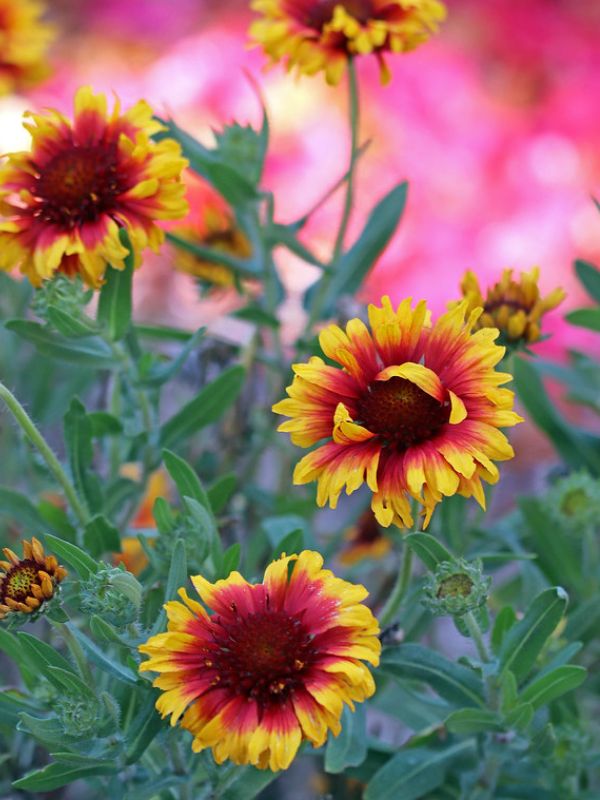
Blanket flowers are native to the tough prairie soil of the western United States, so they thrive in dry open places and poor soils. Blanket flowers are not particular about soil pH, but their sensitive roots don’t like to be wet, so choose an area with well-draining, loose, and sandy soil.
Fertilizing
Blanket flowers do not need a lot of (if any) fertilizer as it tends to encourage the growth of foliage over blooms. In fact, many gardeners have noticed that their blanket flowers seem happiest and most productive in poor soils.
Planting Instructions
Blanket flowers are typically native to hot and dry climates, like tough prairies and rocky plains. These plants thrive in zones 3 to 10 and are well adapted to poor soils and severe drought. Because of this, they require minimal supplemental watering and are ideal for drought-tolerant gardens and gardens with poor, dry soils.
Blanket flowers grow fast and, while plants grown from seed may bloom in the second year after planting, nursery-grown starts will likely bloom right away. You can plant seeds or start in the spring after the last frost has passed in most climates. In zones with milder winters, you can also plant blanket flowers in the fall.
To plant the seeds outdoors, rake the soil and scatter the seeds. Use only a sprinkling of soil to keep the seeds in place (or no cover soil at all) as blanket flower seeds need sunlight to sprout. Lightly mist the soil and keep the area moist for a few weeks until the seeds begin to germinate.
To plant blanket flower starts, dig your holes about 6 to 12 inches apart and just slightly larger than each of the plants’ grow pots. Wiggle each plant out of its pot and tease apart the roots before setting it in the hole. Fill in the holes evenly with soil and water the starts thoroughly.
Pruning
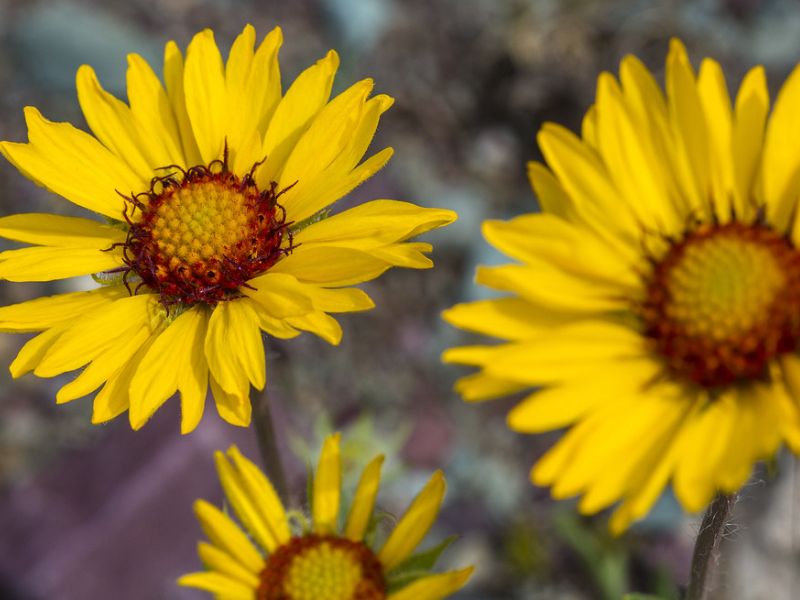
When we say blanket flowers bloom too much, it’s actually true. Since one of the parents of this popular hybrid was an annual, these plants tend to forget to store up energy for the next year. So rather than slow down as fall sets in, blanket flowers continue blooming and setting seed like
there is no tomorrow! You should cut plants back, deadhead blooms, and pinch off flower blooms in late fall to keep plants from wasting their energy on new blooms. This constant flowering is the main reason these plants tend to be short-lived.
Propagation
Luckily, blanket flowers have no problem seeding around gardens. You can sprinkle old blooms around to encourage re-seeding for the following spring. And, if you leave some old blossoms on the plants into the fall and winter, goldfinches and other small birds will happily feast on the seeds.
To propagate blanket flowers from cuttings, look for a stem with at least one to two nodes and clip it off below the nodes with a sharp cutting tool. Treat the cut end of the blanket flower with rooting hormone and stick it into a sterile, moist rooting media (like sand or a mixture of sand and peat). Keep the cuttings moist for up to 3 to 4 weeks and then repot or transplant when rooted.
Another effective way to propagate blanket flowers is through division. It’s a also good idea to divide your blanket flower plants every 2 to 3 years in the spring or fall to help them thrive. To do so, just dig around the plant and gently lift the root ball. Tease the roots apart and separate the plant into two or three sections—each with its own shoots of foliage. Replant and water thoroughly, keeping the soil moist (but not soggy) just until the plants reestablish themselves.
Potting and Repotting
Blanket flowers make great container plants when planted alone or with other heat-tolerant plants that prefer dry conditions. When it comes time to transplant them (late summer or early fall is best), prune the plants back to about one-third of their height and then dig about 6 to 8 inches from the stalks to find the root ball.
Lift the root ball and tease the roots apart while dividing the plant into several sections (if necessary). Replant into a container that is at least 10 percent larger than the root ball and fill the pot with loose, well-draining, high-quality potting soil.
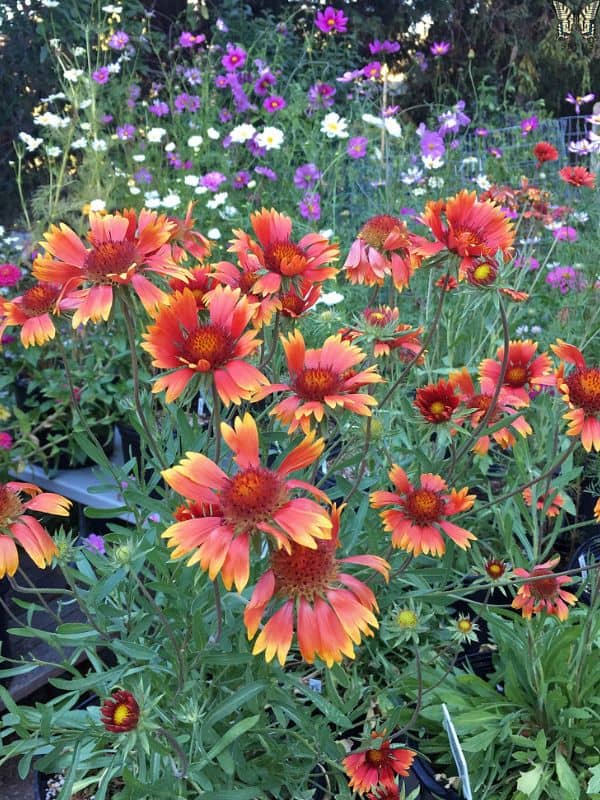
Pests and Diseases
Although blanket flowers attract desirable pollinators, like bees and other species that assist with the propagation of new plants, and are deer-resistant, they are still susceptible to diseases and pests.
Aphids will destroy your plants, but ladybugs can be an easy-care solution, as they are natural aphid predators and will eliminate the pests from your garden. Other pests include goldfinches, which can feed on the flower’s seed cones and will reduce the number of new blooms each season unless you learn how to keep birds out of your garden. It’s important to learn the signs of these pests and diseases so you can treat issues before they spread and affect the growth or overall health of your blanket flowers.
Aster yellows is a viral-like disease carried by leafhoppers and aphids that will quickly spread if left untreated. Once signs of yellowing or wilted narrow petals show up, you should eradicate the infected plants to stop the spread to nearby flowers. Powdery mildew is another affliction to watch for, as the fungi causes plants to wilt or curl. It usually takes hold in moisture-rich conditions, so proper spacing and consistent pruning can prevent this issue from becoming a problem.
Find Where to Buy the Best Blanket Flower (Gaillardia)







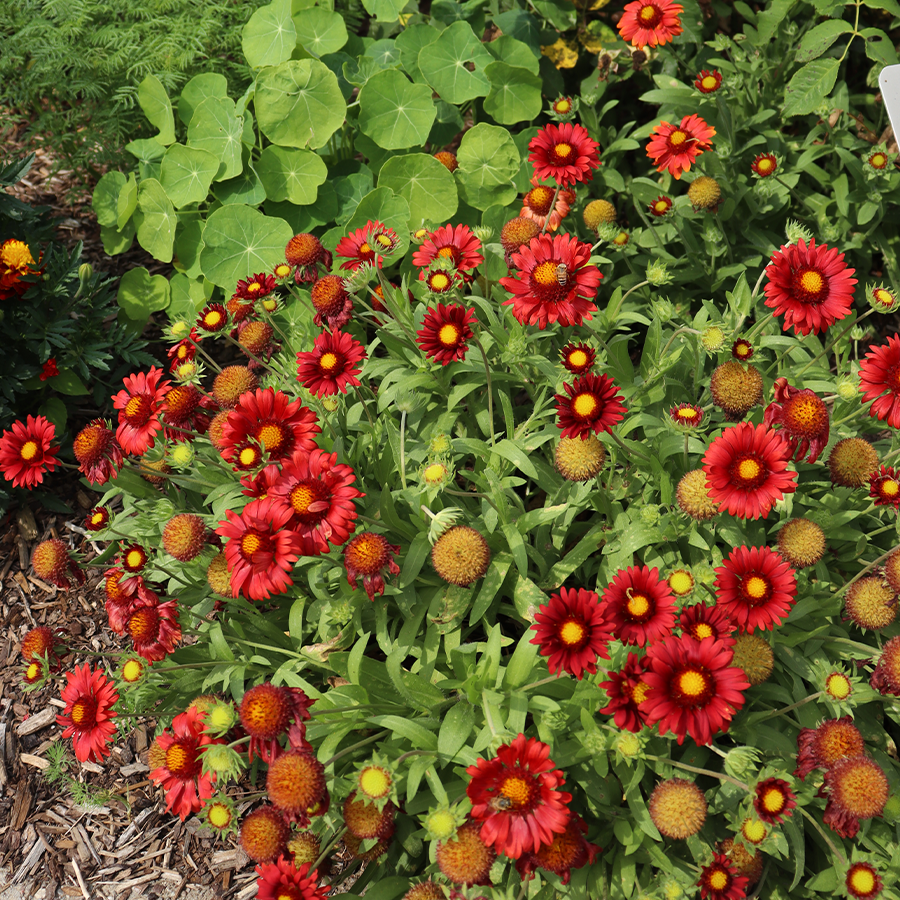










Leave a Reply